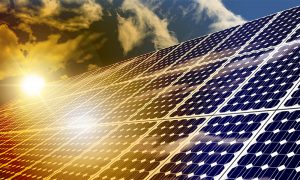Bahrain completes construction of Nabih Saleh Water Distribution Station
The project is part of the Electricity and Water Authority’s strategy to develop and expand Bahrain’s water distribution networks

Senior Bahrain officials have reported that the construction of the Nabih Saleh Water Distribution Station has been completed and work is currently under way for the launch of a solar panel system on the upper reservoir.
As part of the project, a one-million-gallon upper tank was constructed along with accompanying pipelines and valves, and a building for electrical devices, control devices and a water chlorination system.
The UK consultancy firm, Mott MacDonald, oversaw the construction of the $9.23 million station, while Nass Contracting Company handled the construction of its facilities.
The construction of the station come as part of Bahrain’s Electricity and Water Authority’s (EWA) strategy to develop and expand water distribution networks, in line with the directives of the government, led by HRH Prince Salman bin Hamad Al Khalifa, the Crown Prince and Prime Minister, to provide electricity and water services and meet the growing demand for them, reported BNA, citing a senior minister.
Wael bin Nasser Al Mubarak, Bahrain’s Electricity and Water Affairs Minister, said that EWA will continue implementing more development projects that support the kingdom’s infrastructure and improve the quality of services delivered to subscribers.
The project is in line with EWA’s efforts to increase the storing capacity and strengthen the water distribution network in the Nabih Saleh region, as well as meet the needs of its housing and service projects, Al Mubarak stated.
Meanwhile, Shaikh Nawaf bin Ibrahim Al Khalifa, CEO of Bahrain’s Electricity and Water Authority, said the design of the station has taken into account the use of solar energy to generate electricity to operate the station equipment with clean electrical energy produced from solar panels installed on the upper tank, which contain 702 solar cell panels designed to produce about 253 kilowatts (maximum) of clean electrical energy.
“The produced solar energy covers the needs of the station, and exports the surplus electricity to the electricity distribution network,” he noted, adding that the upper reservoir was also covered with aluminium sheets, taking into account the urban character of the region.























